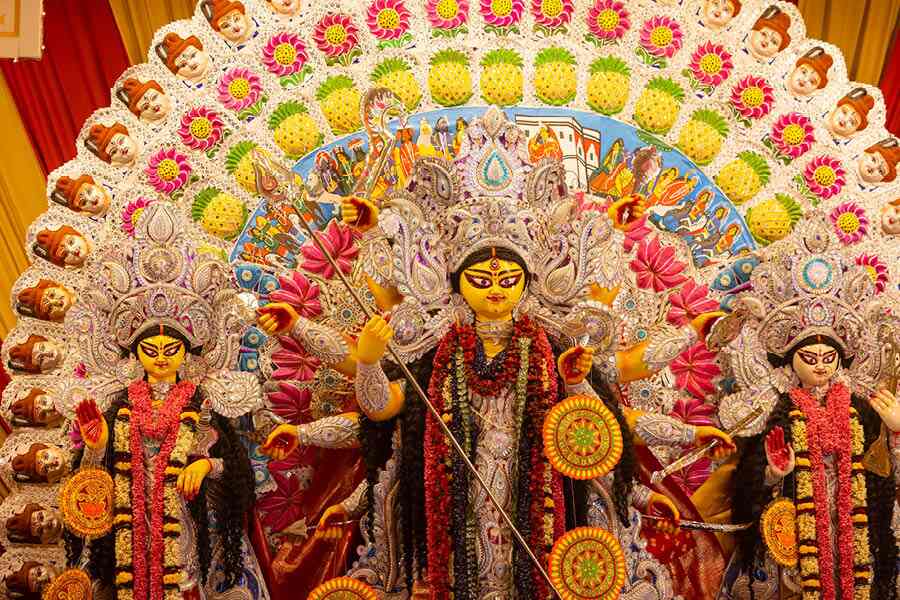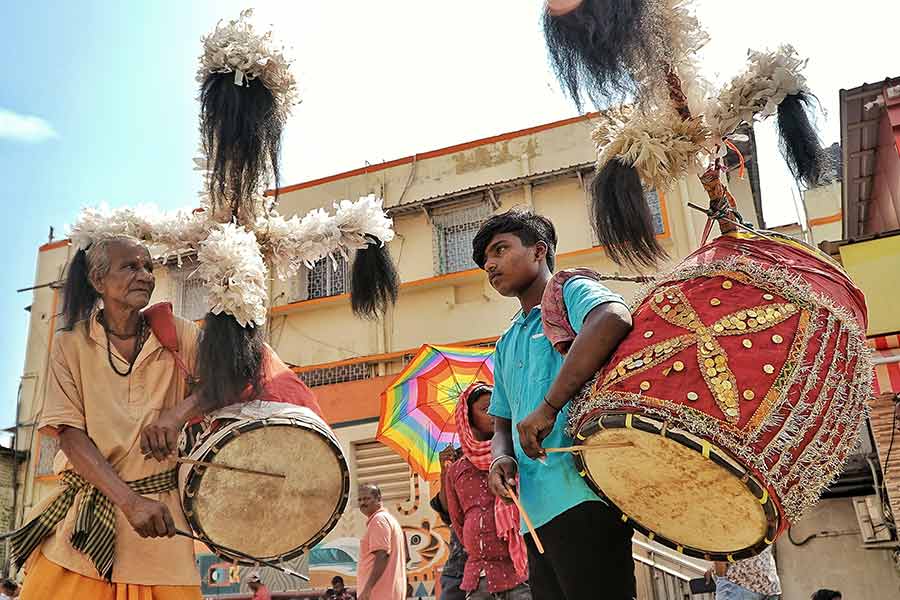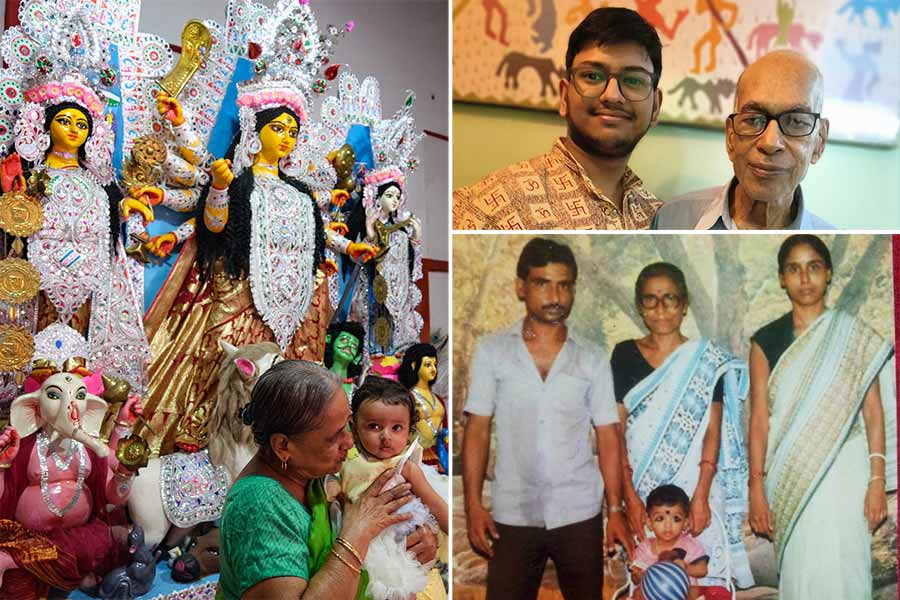Cap banduk, jhal lozenge and jhalmuri, a neighbourhood stroll to check on the progress of the pandal, gradually receding study hours because Puja vacation was approaching and the kaash phool collection competition — that was how Durga Puja spirits kicked in in the 1990s for many of us Kolkatans.
Day one of the holiday would always be Mahalaya — waking up at 4 in the morning with Birendra Krishna Bhadra’s voice from the radio filling the air. There would be a nip in the air, and Ma would burrito wrap me in a light shawl. With Agomoni and Ma Durga’s advent to earth, the kids of the ’90s would know Pujo eshe geche (Puja is here) .
The cue of the ‘dhaak’
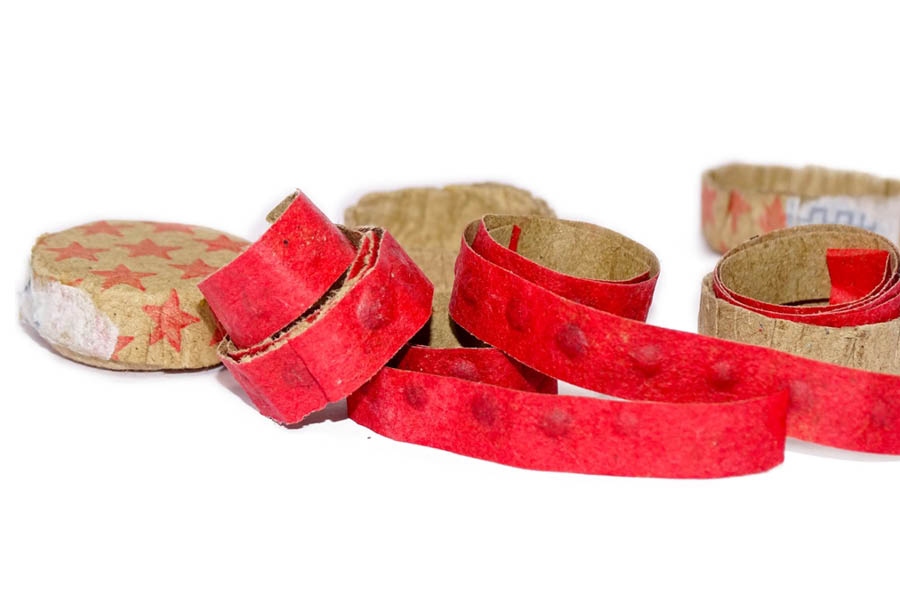
An important item on the festive shopping list were roll caps Shutterstock
Even before notun jama, there was another important item on the festive shopping list — roll caps or cap banduk. Rubbing those bumpy red strips of paper against walls or the road for that little burst of sound, was the real swag. The strips would be soaked in the sun every day diligently before use. `Carrying the cap banduk to the para strolls twice a day was a badge of honour.
Puja also meant pocket money would increase from monthly Rs 10 or Rs 20 to Rs 5 per day, and what a feast that would mean! Munching on amra diye jhalmuri, gulping down the infamous pepsi popsicles that the parents convinced us would lead to jaundice, a rotational collaboration between two friends so a group of 10 brats could enjoy 10 takay 10-ta phucka whale on the way home from checking on the pandals — “Kaku, aar koto din lagbe?” How time has flown from those days to figuring out Puja roster holidays and booking retreats during Pujo days?
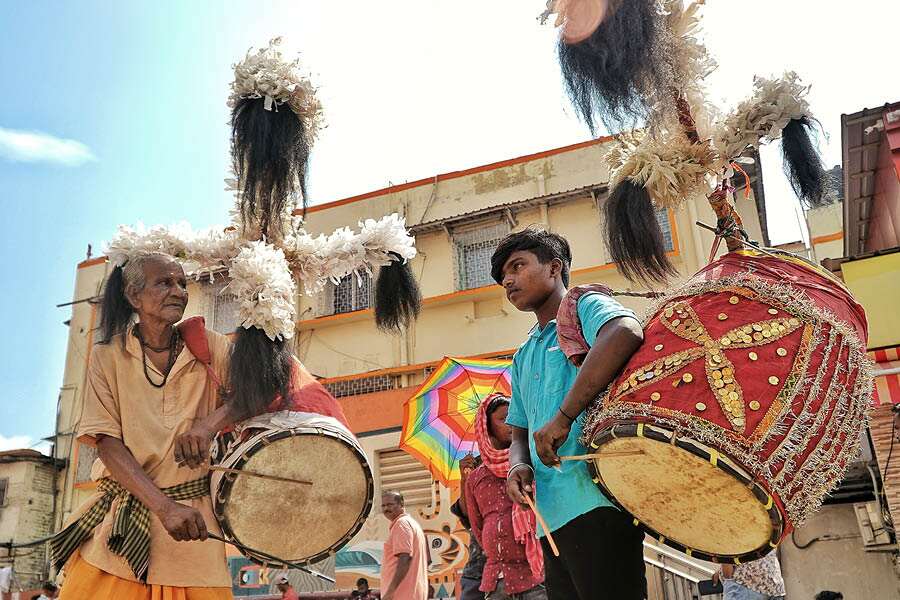
A star attraction of Durga Puja were the dhaakis Soumyajit Dey
A star attraction of Puja were the dhaakis. The faint music of a dhaak, while I reluctantly sat in front of a page full of cursive handwriting or mental maths homework — that miniscule cue was enough for me to sprint out of the room, slip into into Ma or Baba’s oversized flip flops and run to the parar pandal. Friends would join too, and as the dhaakis approached the pandal doing a small dance of their own, guess who joined them? What followed was pestering the dhaaki kakus to allow us to play the dhaak for “just two minutes” each for the rest of the days of Durga Puja.
The OG playlist and ’90s fashion
Music always has a strong role to play in Durga Puja. Palki te bou choley jai — Durga Puja in the ’90s without Mita Chatterjee supremacy? Not a chance! Sharing the spotlight with Chatterjee was Kumar Sanu with his soulful melodies, from Tumsa Koi Pyara Koi Masoom to Koto Je Sagar Nadi and Priyotama Mone Rekho. The mornings would start with Sagar Sen and Suchitra Mitra but would swiftly move to Asha Bhosle, Mita Chatterjee, Kishore Kumar and Kumar Sanu as the Puja pandals played their playlist on cassette players. Of course, the hit songs of the year made it to the list, but some numbers remained constant.
The 2000s was a different era, and honestly, the paradigm shift in festive music was too stark to come to terms with. Today, new-age songs have overshadowed the OG classics, and as soon as pratima comes to the pandal, the heart misses those songs. That music takes you back to the time when tape frocks and flip flops made the OOTD, Pujo special haircuts meant a bati chaant or Chinese cut, and Ma would make a special breakfast of luchi and sada aloor torkari or chholar dal. The ’90s now being so far back reminds me that I am approaching 40, my parents are senior citizens, and my grandparents have gone to where they promised they never would — tarader deshey.
Simple joys and grand feasts

The daaker saaj — the traditional white and silver decor — was preferred for the thakur My Kolkata Archives
Durga Puja in the 1990s wasn’t all about theme pandals and larger than life idols. It was simpler, and felt more familiar. The daaker saaj — the traditional white and silver decor — was preferred for the thakur. Kids like me from middle income group families knew that shopping for special clothes would happen at the beginning of the month after Baba’s salary was in, and there were no tantrums for branded clothes. What was a brand anyway? The only thing I remember expressing a wish for were ‘Diana’ shoes — closed toe kitten heels with a slightly pointy toe — which were in style then because Princess Diana was spotted wearing this specific style of shoe.
Durga Puja also meant amping up the postcard collection with popular landscapes around the world or faces of film stars, all bought with that extra pocket money because lozenges came for 25 paisa and postcards cost Rs 1.
Of course, there’s no Puja without food! The special menu for Pujo then didn’t involve cafe hopping or going through restaurant offerings. It was Ma replicating recipes from the Pujo special newspaper supplementaries or Pujo Barshikis. It also meant luchi galore thanks to a no-rice menu on Sasthi, mutton on Navami, and watching my paternal grandma, thakuma, and Ma preparing for Dashami specials on Navami. Dashami was all about a heavy heart, inadvertently crying every year at the pandal, asking Dugga to not go. We knew nothing could stop her from leaving for Kailash after her brief stay at her baaper bari — something that has still not changed — Bijoya evenings would begin with writing Shri Shri Durga Sahay on banana leaves with alta, and seeking blessings from elders. By then, almost magically, Ma and thakuma would have finished making a few batches of nimki, naru, rosogolla, pantua, and vegetable chop. Relatives would visit to wish each other Shubho Bijoya, and in between that a special long ringtone would sound on the landline and I knew it was my maternal grandfather, dadu, calling from Raghunathganj in Murshidabad.
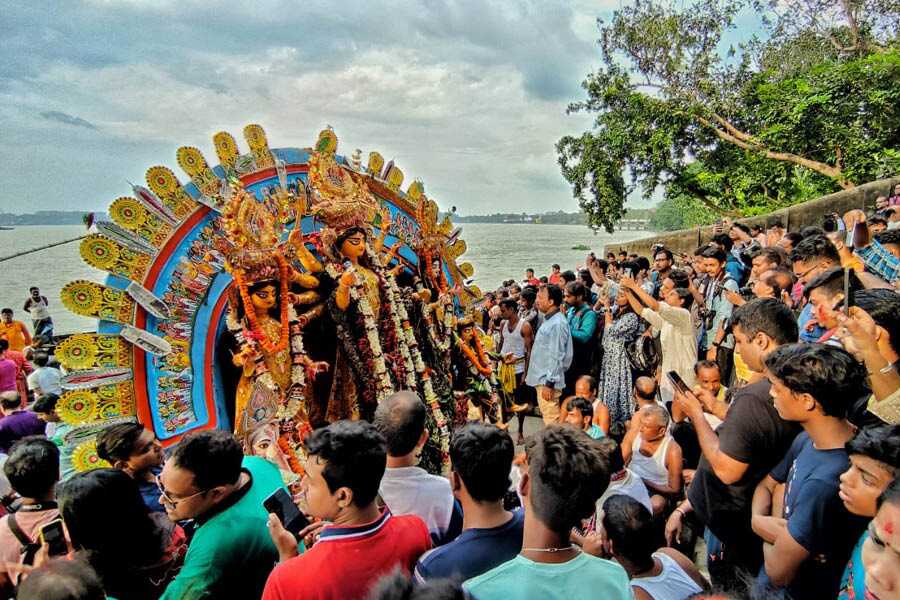
No matter what, the heart knows, 'asche bochor abar hobe' My Kolkata Archives
Looking back at the Durga Puja celebrations of my childhood in the 1990s, the lyrics of Somewhere Only We Know seem more real than ever. Durga Puja is still the best time of the year. The anticipation still brings the same joy. But the heart still misses those glory days of childhood.
Thakur asbe kotokkhon, thakur jabe bisorjon…Thankfully time has not been able to change one thing — no matter what, the heart knows, asche bochor abar hobe.
